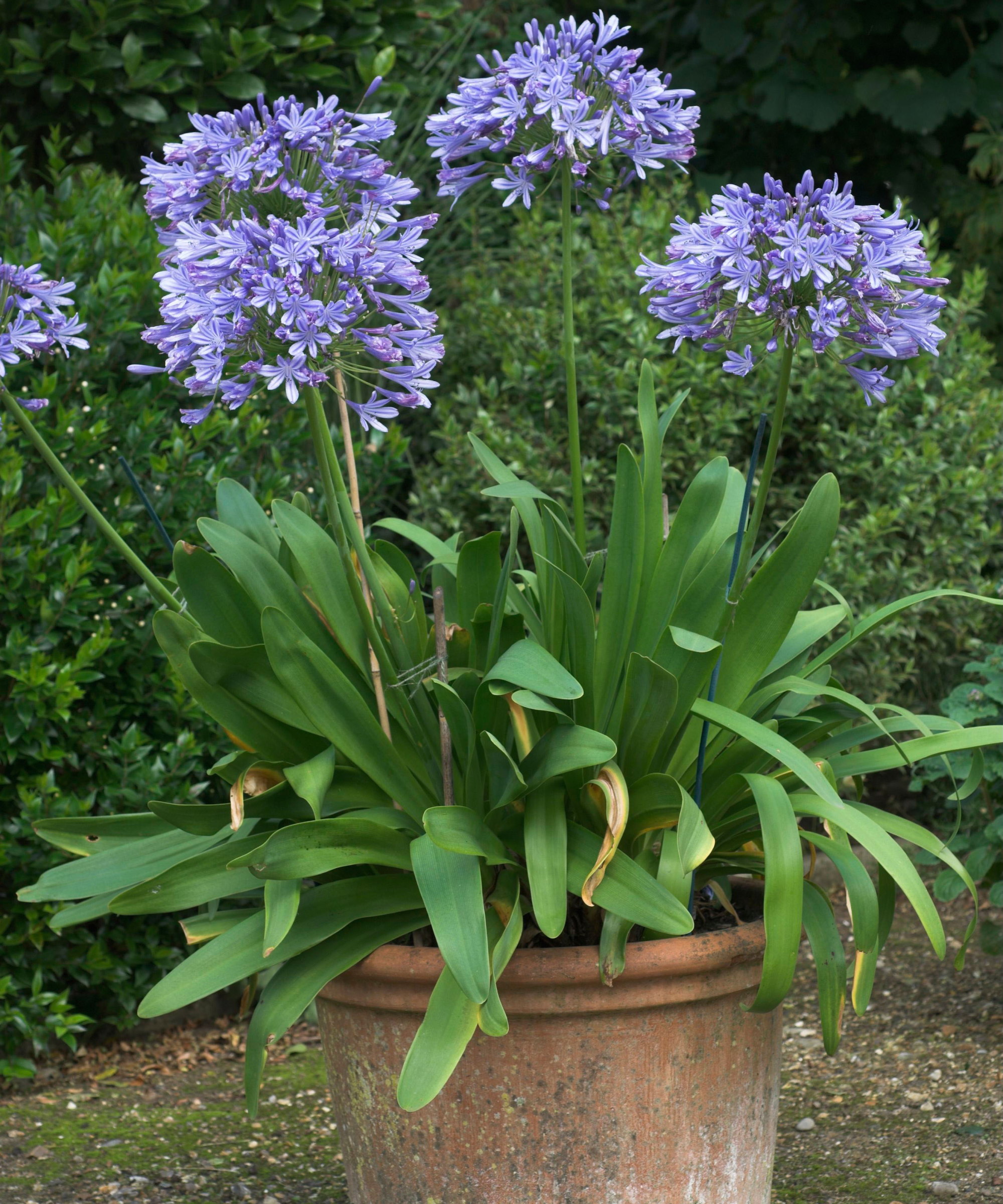
I added agapanthus to my border this year and it comes with no regret. Tall flower spikes of purple and white blooms have been a joyful sight, flowering from late spring through summer. Now that they have faded, I've been wondering whether I need to winterize agapanthus?
If you also grow agapanthus, this is a key thing to find out. The truth is, you only really need to winterize agapanthus if you live in US hardiness zone 7 or below. Milder climes can get away with minimal protection for these perennials, though it is advised to cut back spent flower spikes. Likewise, even if you do live in US hardiness zone 8 or above, you may want to consider providing some light frost protection (like mulching) if you have frosty periods forecasted, to ensure your agapanthus returns reliably next year.
For those living in the coldest regions, it's best to actually overwinter agapanthus by lifting and storing them under cover. Here, I explain when and how to winterize agapanthus, so you can get this fall gardening checklist job ticked off ahead of frost.

How to Winterize Agapanthus
How you winterize agapanthus will depend on your US hardiness zone and the agapanthus variety you're growing, as some are slightly more hardy than others. For example, evergreen agapanthus plants tend to be less hardy than deciduous varieties.
For the most part, however, agapanthus is hardy across US hardiness zone 7 to zone 11. For those living within this range, you can get away with minimal frost protection. However, those living in colder areas should consider more robust winterizing outdoors and even overwintering indoors. Below, I discuss how to do both methods and how to know which is best for you to use.
How to Winterize Agapanthus Outdoors

Deciduous agapanthus is generally hardy down to 14°F, while evergreen varieties are only hardy down to 23°F. For this reason, agapanthus planted in zones 7 and 8 generally need some winter protection. Luckily, there are only a handful of steps to protect plants from frost.
'If you have a deciduous agapanthus, it's important to wait until the foliage has naturally turned yellow in fall before cutting it back,' says Drew Swainston, Gardens Content Editor at Homes & Gardens.
Using essential pruning tools, like these Fiskars bypass pruners from Amazon, deadhead agapanthus flowers that remain and cut back yellowed foliage to around four inches.
'It's at this point you also want to stop watering plants before frost,' Drew adds.
With the dead plant matter removed, you can then turn your attention to mulching. You want to apply around four to six inches of mulch around the base of your agapanthus. This will provide insulation, trapping in heat and moisture to help your agapanthus get through winter.
'Some of the best fall mulching materials include homemade compost, leaf mold, and wood chips,' says Drew. 'You want to make sure the crown of your agapanthus is covered.'
You can find organic mulch on Amazon to use.
'It's a slightly different process for evergreen agapanthus,' Drew notes. 'You don't want to remove the foliage because it protects the roots and crown of the plant over winter. You should, however, put down a layer of mulch.'
Something to also be aware of is your soil type. To help winterize agapanthus outdoors successfully, you should ensure it is planted in well-draining soil. Waterlogged soil may cause rotting in the colder months.
'If you happen to be growing agapanthus in pots, you can use methods to protect container plants from winter weather for extra insulation,' Drew notes. 'This includes wrapping the pot with burlap (from Amazon).'
'When spring comes around and new growth starts to emerge, gradually remove the mulch materials and start watering your agapanthus plants again,' Drew says.
How to Overwinter Agapanthus Indoors

Overwintering agapanthus indoors is required for those living in US hardiness zones 6 and below. In these frostier conditions, your agapanthus will be less likely to survive winter outdoors, so it's safer to lift and store it.
'Begin by cutting back deciduous agapanthus once foliage has naturally yellowed,' says Drew. You then want to get your essential gardening tools for digging, like this trowel from Amazon.
'Carefully dig around the base of your agapanthus to lift the rhizomes, taking care not to damage the root ball,' Drew says. 'You then want to brush off as much soil as you can without washing the rhizomes, which could risk rotting during storage.'
The next step is allowing the rhizomes to dry, a process called 'curing'. 'This helps to toughen their skin and can be achieved by simply laying them out somewhere warm and dry for up to a week,' Drew explains.
After curing, you can wrap your agapanthus rhizomes in newspaper and store them in a dry container like a cardboard or wooden box, alongside shredded paper, coco coir (from Amazon), or vermiculite.
'It's really important to make sure the rhizomes aren't touching to prevent fungal issues and rot,' Drew says. 'You should keep them somewhere with a temperature of 50°F over winter.'
For evergreen agapanthus, it's best to lift and pot them up to store somewhere undercover where they will receive bright light, like a greenhouse or conservatory.
This will allow the green foliage to continue carrying out photosynthesis in preparation for active spring growth. Once again, the temperature should be kept around 50°F.
In spring, after the risk of late frost, you can replant your agapanthus rhizomes and gradually acclimatize your evergreen agapanthus back outdoors for another season of blooms.
FAQs
Do I Water Overwintering Agapanthus?
Overwintering deciduous agapanthus rhizomes should not be watered until they are back in the ground. This could cause rot and make them less viable for replanting. However, overwintering evergreen agapanthus should be watered, though sparingly. You don't want its soil to dry out entirely, but it also isn't actively growing, so it shouldn't be watered frequently. This can once again lead to rot and kill off the plant.
Once you have replanted your agapanthus in spring, make sure to fertilize your agapanthus. If you find your agapanthus is not flowering, it indicates you may need to adjust the growing environment. For example, your agapanthus may need a sunnier position.
Shop Frost Protection Essentials:
This pine straw is 100% organic and perfect for mulching plants in fall. It's soil retentive and will provide insulation over winter.







